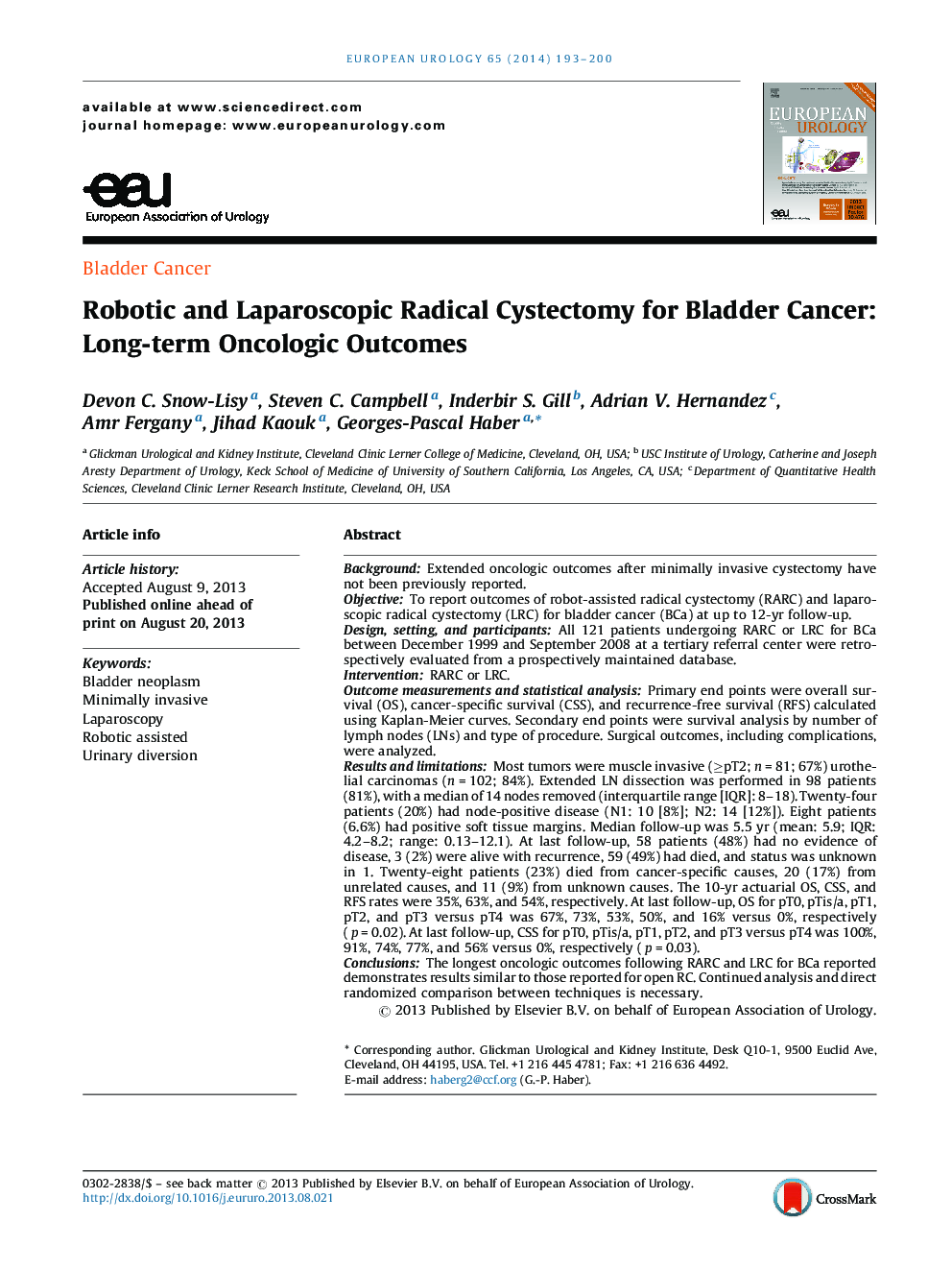| کد مقاله | کد نشریه | سال انتشار | مقاله انگلیسی | نسخه تمام متن |
|---|---|---|---|---|
| 3925044 | 1253121 | 2014 | 8 صفحه PDF | دانلود رایگان |
BackgroundExtended oncologic outcomes after minimally invasive cystectomy have not been previously reported.ObjectiveTo report outcomes of robot-assisted radical cystectomy (RARC) and laparoscopic radical cystectomy (LRC) for bladder cancer (BCa) at up to 12-yr follow-up.Design, setting, and participantsAll 121 patients undergoing RARC or LRC for BCa between December 1999 and September 2008 at a tertiary referral center were retrospectively evaluated from a prospectively maintained database.InterventionRARC or LRC.Outcome measurements and statistical analysisPrimary end points were overall survival (OS), cancer-specific survival (CSS), and recurrence-free survival (RFS) calculated using Kaplan-Meier curves. Secondary end points were survival analysis by number of lymph nodes (LNs) and type of procedure. Surgical outcomes, including complications, were analyzed.Results and limitationsMost tumors were muscle invasive (≥pT2; n = 81; 67%) urothelial carcinomas (n = 102; 84%). Extended LN dissection was performed in 98 patients (81%), with a median of 14 nodes removed (interquartile range [IQR]: 8–18). Twenty-four patients (20%) had node-positive disease (N1: 10 [8%]; N2: 14 [12%]). Eight patients (6.6%) had positive soft tissue margins. Median follow-up was 5.5 yr (mean: 5.9; IQR: 4.2–8.2; range: 0.13–12.1). At last follow-up, 58 patients (48%) had no evidence of disease, 3 (2%) were alive with recurrence, 59 (49%) had died, and status was unknown in 1. Twenty-eight patients (23%) died from cancer-specific causes, 20 (17%) from unrelated causes, and 11 (9%) from unknown causes. The 10-yr actuarial OS, CSS, and RFS rates were 35%, 63%, and 54%, respectively. At last follow-up, OS for pT0, pTis/a, pT1, pT2, and pT3 versus pT4 was 67%, 73%, 53%, 50%, and 16% versus 0%, respectively (p = 0.02). At last follow-up, CSS for pT0, pTis/a, pT1, pT2, and pT3 versus pT4 was 100%, 91%, 74%, 77%, and 56% versus 0%, respectively (p = 0.03).ConclusionsThe longest oncologic outcomes following RARC and LRC for BCa reported demonstrates results similar to those reported for open RC. Continued analysis and direct randomized comparison between techniques is necessary.
Journal: European Urology - Volume 65, Issue 1, January 2014, Pages 193–200
